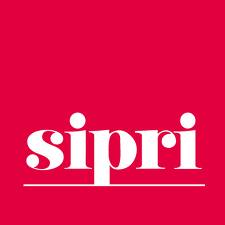 (Munich, 31 January 2014) Sales of arms and military services by the largest arms-producing companies—the SIPRI Top 100—totalled $395 billion in 2012 according to new data on international arms production launched today by Stockholm International Peace Research Institute (SIPRI) at the Munich Security Conference.
(Munich, 31 January 2014) Sales of arms and military services by the largest arms-producing companies—the SIPRI Top 100—totalled $395 billion in 2012 according to new data on international arms production launched today by Stockholm International Peace Research Institute (SIPRI) at the Munich Security Conference.
However, the decrease in arms sales in 2012 was not uniform: while sales by companies in the United States, Canada and most West European countries continued to fall, arms sales by Russian companies increased sharply, by 28 per cent in real terms.
The share for companies outside North America and Western Europe has also been increasing since 2005 and, at 13.5 per cent, is at its highest point in the history of the Top 100, which does not include China-based companies due to lack of available data.
Rapid rise in Russia due to domestic procurement plans
Russian companies saw a particularly large increase in estimated arms sales in 2012. Of the 6 Russian companies in the Top 100, all except United Aircraft Corporation saw increases in excess of 20 per cent, and Almaz Antei—with a 41 per cent rise—now stands in 14th place in the Top 100, the highest position taken by a Russian company since data became available in 2002.
Russian arms companies continue to maintain high export levels, but the increase in estimated arms sales in 2012 mainly reflects large and growing domestic sales, as part of Russia’s $700 billion 2011–20 State Armaments Plan. While there remains widespread scepticism as to whether the aims of the plan can be fully achieved, it is clear that a major increase in Russian military equipment procurement is taking place.
‘The Russian arms industry is gradually re-emerging from the ruins of the Soviet industry’, said Dr Sam Perlo-Freeman, Director of SIPRI’s Military Expenditure and Arms Production Programme. ‘Nonetheless, the industry is still plagued by outdated equipment, inefficient organization and widespread corruption, which will continue to limit Russia’s ability to compete technologically with the West.’
US-based companies’ arms sales affected by Iraq withdrawal
Sales by the 42 US-based arms producers amounted to 58 per cent of the total arms sales of the Top 100, with 30 companies based in Western Europe making up another 28 per cent of the total. While these companies still accounted for 87 per cent of the total arms sales, the decline in arms sales in these traditional producer regions echoes the decline in military spending, which began clearly in 2011. In particular, the withdrawal of US forces from Iraq at the end of 2011 had a significant effect on a number of companies.
The largest percentage fall in arms sales in the Top 100 in 2012—by 60 per cent in real terms—was by KBR, which provided logistic support to US forces in Iraq. Sales by companies providing armoured vehicles to US forces in Iraq and Afghanistan, including Navistar and AM General, also decreased.
‘The US arms industry has fallen back somewhat from the heights it reached before the Budget Control Act, when the USA was still embroiled in two wars. But it still enjoys sales and profits that are very high by historic standards,’ said Dr Perlo-Freeman.
Other emerging and re-emerging producers
This year, for the first time, the SIPRI Top 100 includes data for Ukraine. The consolidation of much of the Ukrainian arms industry into a single holding company, Ukroboronprom—whose arms sales increased by 14 per cent in 2012, reaching $1.44 billion—puts that company clearly in the Top 100 for both 2011 and 2012.
Brazilian aircraft manufacturer Embraer entered the Top 100 in 2010 and was one of the largest risers in 2012, by 36 per cent in real terms, climbing from 83rd to 66th position in the Top 100 with arms sales of $1.06 billion.
The growth of the South Korean arms industry continued in 2012 with a 4.2 per cent real increase in arms sales by companies in the Top 100. The total arms sales of Korean companies in the Top 100 have more than doubled in real terms since 2002.
The SIPRI Arms Industry Database
The SIPRI Arms Industry Database was created in 1989. It contains financial and employment data on arms producing companies worldwide. Since 1990, SIPRI has published data on the arms sales and employment of the 100 largest of these arms-producing companies in the SIPRI Yearbook. Full details can be found on the SIPRI website.
This is the first of three major data set pre-launches in the lead-up to the publication of SIPRI Yearbook 2014. On 17 March SIPRI will release its international arms transfers data (details of all international sales, transfers and gifts of major weapons in 2013) and on 14 April its world military expenditure data (comprehensive information on global, regional and national trends in military spending). Finally, in June, SIPRI will launch its 2014 Yearbook (cutting-edge information and analysis on the state of the world’s nuclear forces, the international peacekeeping agenda and steps to control weapons of mass destruction).
Stockholm International Peace Research Institute (SIPRI)
SIPRI is an independent international institute dedicated to research into conflict, armaments, arms control and disarmament. Established in 1966, SIPRI provides data, analysis and recommendations, based on open sources, to policymakers, researchers, media and the interested public. SIPRI is regularly ranked among the most respected think tanks worldwide.
